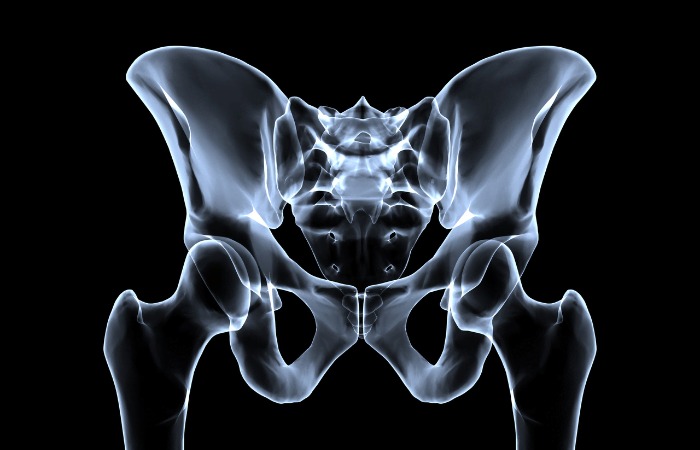
The pelvic region houses critical organs related to both the gynecological and urological systems. Whether you are facing issues related to menstruation, pregnancy, urinary problems, or pelvic pain, a USG pelvis scan, also known as a pelvic ultrasound, is an essential diagnostic tool. This non-invasive procedure uses sound waves to create real-time images of your pelvic organs, providing accurate insights into a variety of conditions affecting the bladder, kidneys, uterus, ovaries, and prostate.
At Diagnopein, we offer affordable USG pelvis scans across cities like Pune, Delhi, Nagpur, Mumbai, and Bhopal, making it accessible for patients seeking early diagnosis and treatment of gynecological and urological concerns. At an affordable rate, this ultrasound provides an essential, detailed view of pelvic organs and is crucial in identifying problems that could lead to more severe health issues if left undiagnosed.In this blog, we will discuss how USG pelvis scans work, the importance of this diagnostic tool for gynecological and urological conditions, and how it can provide peace of mind to those facing pelvic-related health concerns.
An USG pelvis scan is a non-invasive imaging technique that uses high-frequency sound waves to produce real-time images of the organs inside your pelvic region. This procedure allows doctors to visualize the bladder, ovaries, uterus, fallopian tubes, and prostate.
There are two primary types of USG pelvic scans:
1. Abdominal Pelvic Ultrasound: For this type of scan, a gel is applied to the lower abdomen, and a transducer is moved over the area to capture images of the pelvic organs.
2. Transvaginal Ultrasound: In this case, the transducer is inserted into the vagina to capture detailed images of the uterus, ovaries, and other internal structures.
Both types of scans provide clear, high-resolution images that help doctors diagnose a range of conditions, including cysts, tumors, infections, and structural abnormalities.
How USG Pelvis Helps Diagnose Gynecological Conditions?The USG pelvis scan is a vital tool in diagnosing gynecological conditions affecting the uterus and ovaries. It is commonly used to detect:
1. Uterine Fibroids: These non-cancerous growths in the uterus can cause heavy bleeding, pain, and pressure on other organs. A pelvic ultrasound is an effective way to visualize fibroids and determine their size and location.
2. Ovarian Cysts: Ovarian cysts can cause symptoms such as pelvic pain, bloating, and irregular periods. A USG pelvis scan helps in identifying cysts and monitoring their growth.
3. Endometriosis: This condition occurs when tissue similar to the lining of the uterus grows outside the uterus, often causing pain, heavy periods, and infertility. A pelvic ultrasound can help doctors diagnose this condition.
4. Pelvic Inflammatory Disease (PID): PID is an infection of the reproductive organs that can cause chronic pelvic pain and infertility. A USG pelvis scan helps to detect signs of PID and assess any damage to reproductive organs.
5. Ectopic Pregnancy: In cases of suspected ectopic pregnancy, where the fertilized egg implants outside the uterus, an early USG pelvis scan can confirm the location of the pregnancy and assess its viability.
6. Uterine Cancer: In rare cases, USG pelvis scans can help detect early signs of uterine cancer, especially in postmenopausal women experiencing abnormal bleeding.
While primarily used to diagnose gynecological conditions, USG pelvis scans are also highly effective for urological diagnosis. Some of the most common urological conditions detected by pelvic ultrasounds include:
1. Urinary Tract Infections (UTIs): A pelvic ultrasound can help visualize the bladder and kidneys, which can help diagnose infections and complications caused by them.
2. Kidney Stones: Ultrasound imaging is one of the most reliable methods for detecting kidney stones, which can cause severe pain, nausea, and urinary issues.
3. Bladder Stones: Just like kidney stones, bladder stones can be diagnosed using a USG pelvis scan. These stones can cause frequent urination, pain during urination, and difficulty emptying the bladder.
4. Prostate Issues: For men, a USG pelvis scan can help assess the prostate gland for any signs of enlargement or abnormalities that may indicate conditions such as benign prostatic hyperplasia (BPH) or prostate cancer.
5. Bladder Cancer: A pelvic ultrasound can detect abnormal masses or thickening in the bladder, which may be indicative of bladder cancer.
1. Non-invasive and Painless: Unlike other imaging techniques, such as CT scans or MRIs, USG pelvis scans do not require any incisions or injections. The procedure is non-invasive and pain-free, making it ideal for patients of all ages.
2. Quick and Convenient: The procedure usually takes between 15 and 30 minutes, depending on the type of ultrasound, making it one of the quickest diagnostic methods available.
3. Real-time Imaging: Digital images are displayed on the screen in real-time, allowing doctors to observe the organs and diagnose issues immediately.
4. Safe for Pregnant Women: Since USG pelvis scans do not use radiation, they are completely safe for pregnant women and can be used to monitor fetal development or diagnose complications during pregnancy.
5. Affordable and Accessible: At Diagnopein, we offer USG pelvis scans at an affordable price, ensuring that this vital diagnostic tool is available to all patients in Pune, Delhi, Nagpur, Mumbai, and Bhopal.

The preparation for a USG pelvis scan depends on the type of scan being performed. For abdominal scans, patients may be asked to drink water before the procedure to fill the bladder. For transvaginal ultrasounds, the patient may be asked to empty their bladder beforehand.
It’s essential to follow the instructions provided by your healthcare provider to ensure the best results. The procedure is safe and typically takes about 30 minutes, depending on the complexity of the condition being examined.
USG pelvis scans play a crucial role in the early detection of gynecological and urological conditions. Whether you’re experiencing pelvic pain, irregular periods, urinary issues, or other related symptoms, this diagnostic tool can provide valuable insights that help doctors recommend the best course of treatment.
With affordable pricing and availability across cities like Pune, Delhi, Nagpur, Mumbai, and Bhopal, Diagnopein makes it easy for patients to access this vital diagnostic service. Book your USG pelvis scan today and take the first step toward better health.